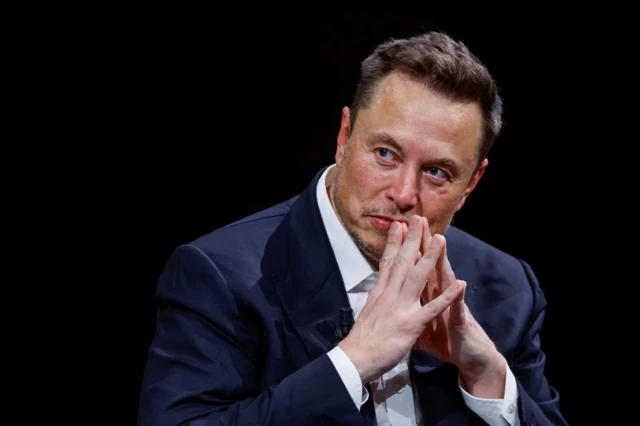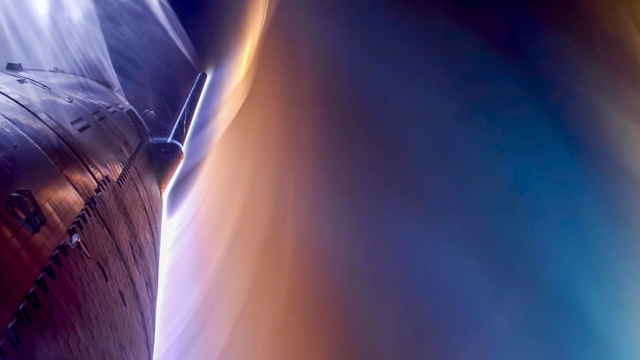Elon Musk recently revealed that Starship will have three times more thrust than the Saturn V – the rocket that took Apollo astronauts to the Moon.

During a discussion with the Tesla Owners Silicon Valley group yesterday, Elon Musk shared many remarkable information about SpaceX’s Starship rocket development program. This is the world’s largest rocket system that is in the process of being completed and SpaceX is currently preparing for its 10th full system test flight.
According to Musk, Starship’s two most important goals for next year are to recover the rocket’s upper stage and perform in-orbit refueling. Both are key to reducing launch costs, but SpaceX has yet to make significant progress amid repeated failures during its test campaigns through 2025.
At the beginning of his speech, Musk admitted that developing Starship is a challenging task. He said: “Starship is an insane program in many respects, because it will have 2.5 times the thrust, and future versions could reach three times the thrust of the Saturn V – the largest rocket ever built and also the largest flying object in history.” He also emphasized that, besides its enormous size and nearly twice the weight of the Saturn V, what makes Starship special is the goal of complete and rapid reuse, something that has never been done before in the aerospace industry.

Musk revealed that when he first announced his plans to develop Starship, most people were skeptical and even laughed at the idea because it was too far-fetched. According to him, Starship had a “high laugh factor” when many people thought the idea was impossible.
As for the current state of affairs, Musk said the biggest problem is the rocket’s upper stage heat shield. This system, which consists of thousands of SpaceX-made heat-resistant tiles, is crucial for Starship to return to Earth intact. He described it as the program’s “biggest remaining technical challenge.”
The next goal is to make Starship’s upper stage land safely and be recovered using mechanical “chopsticks” mounted on the launch tower — a must if SpaceX wants to move toward rapid reuse. Elon Musk has expressed hope that this recovery will be successful this year or in the first half of next year at the latest.
If these technical milestones are met, SpaceX will continue to make improvements to make both the upper stage and the Super Heavy booster fully and quickly reusable, which will reduce the cost per launch and per ton of payload to even lower than the Falcon 1, SpaceX’s first single-use rocket.
Musk stressed that, if successful, the cost of sending more than 100 tons of cargo into orbit using Starship would be much lower than the cost of sending half a ton of cargo using the previous Falcon 1.
Musk also shared that a long-term strategic goal of the Starship program is to refuel in space. Instead of using the term “refueling,” he called the process “refilling,” meaning that two Starships would fly into orbit, dock, and transfer fuel from one ship to the other. After perfecting this technique, SpaceX will develop orbital refueling stations to serve NASA’s Artemis program lunar missions as well as future interplanetary trips.
News
The long-standing conflict between Rosie O’Donnell and Donald Trump flared up again after she called for the president to resign.
Rosie O’Donnell demands Trump’s removal from office over Kennedy Center honor in latest tirade White House previously said O’Donnell suffers…
Ella Langley Just Accomplished Something No Other Solo Female Country Artist Has in This Decade
Ella Langley has added another entry to the record books. The country singer’s track “Choosin’ Texas” has been collecting records…
Blake Shelton and John Legend’s Christmas party was chaotic. And the Christmas tree wearing a tattered cowboy hat was the highlight!
Blake Shelton’s Christmas Tree Topper Had John Legend Frazzled: “What Is This?” If only The Oddest Couple, starring The Voice Coaches, became a…
MICHAEL Buble has given fans a rare glimpse into his home life following his shock departure from The Voice.
Michael Buble gives rare glimpse into his home life as he releases surprise documentary after leaving The Voice The singer, 50, stepped…
The lawsuit involving a woman claiming to be Miley Cyrus’s mother has become even more outrageous after she decided to reveal the truth about the story.
Woman Who Claims To Be The Mother Of Miley Cyrus Reveals Why She Chose That Name…Except Miley Isn’t Actually Her…
The country singer admitted that he not only swam naked in Jason Aldean’s pool but also urinated in it.
Country music star admits he went skinny dipping and peed in Jason Aldean’s pool Country music singer Tyler Farr revealed…
End of content
No more pages to load












